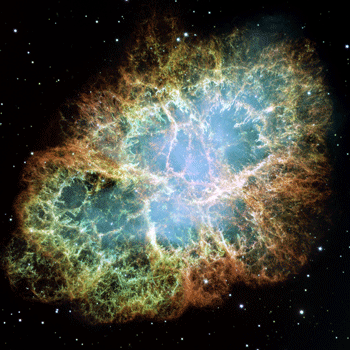"We Choose to Go to the Moon": Rory Kennedy Screens her NASA Documentary at MBL

Filmmaker Rory Kennedy didn’t miss a beat when the Discovery Channel asked her to make a documentary about NASA, the National Aeronautics and Space Administration, to commemorate the agency’s 60th anniversary last year.
 MBL Trustee Chris Kennedy interviews his sister, Rory, about her NASA documentary in MBL's Lillie Auditorium. Credit: Dee Sullivan
MBL Trustee Chris Kennedy interviews his sister, Rory, about her NASA documentary in MBL's Lillie Auditorium. Credit: Dee Sullivan“I’ve always been fascinated with NASA. It was a big part of our growing up,” said Kennedy, who along with her brother, MBL Trustee Chris Kennedy, was at the MBL this week for a screening and discussion of Rory’s film, “Above and Beyond: NASA’s Journey to Tomorrow.”
Rory and Chris are niece and nephew of the late President John F. Kennedy, who in the early 1960s galvanized the nation with a vision of space exploration and discovery by challenging NASA -- just four years after its founding -- to land on the moon within the decade.
“Having such pride in our Uncle Jack's role in getting us to the moon—it was an honor to tell NASA’s story,” Rory said, who remembers astronauts visiting her childhood home. “NASA has given so much not only to our family, but to all of humanity," she said. "Making this film was an opportunity to give back a little bit.”
“Above and Beyond” documents NASA’s astonishing delivery on the president’s challenge, with Apollo 11 astronauts Neil Armstrong and Buzz Aldrin taking the first human steps on the moon on July 20, 1969.
 Crab Nebula, the result of a supernova seen in 1054 AD, imaged with the Hubble Space Telescope. Credit: NASA
Crab Nebula, the result of a supernova seen in 1054 AD, imaged with the Hubble Space Telescope. Credit: NASABut it also coveys the sweep and scope of NASA’s missions in the following decades with historical footage and interviews with NASA astronauts, scientists and engineers. From the first flybys of Venus and Mars in the 1960s, to the profound images and data brought back by the Hubble Space Telescope since 1990, to the launch of an orbiting, microgravity research lab, the International Space Station in 1998, NASA missions have “changed not only our vision of the universe, but of our planet and ourselves,” Rory comments in the film, which she narrates.
“I am blown away by our knowledge of the universe today vs. where we were 60 years ago,” Rory said at the MBL. “With Hubble, for instance, we can look back and see images of stars being formed, like our sun was formed, up to 13 billion years ago.” Since the universe began approximately 13.8 billion years ago, “Hubble is looking back close to the beginning of time. This is so awe-inspiring,” she said. “When you envision what that means, that knowledge base, it’s pretty humbling.”
 Earthrise seen from the Apollo 11 lunar orbiter before it touched down on the Moon. Credit: NASA
Earthrise seen from the Apollo 11 lunar orbiter before it touched down on the Moon. Credit: NASABeyond peering into the vast universal expanse, the film highlights the deep knowledge about our own planet that NASA’s Earth Sciences Division provides. Since 1972, NASA’s Landsat satellites have been continuously acquiring images of the Earth’s surface, providing uninterrupted data that is shared freely and openly with scientists. NASA now has 19 satellites studying the Earth – streaming measurements of clouds, ice sheets, ocean currents, land cover, changes in vegetation. A carbon monitoring system measures carbon sources and emissions on a global scale. Combined with field work and observations from the International Space Station, ships and planes, NASA has amassed a highly detailed record of how the planet is changing over more than four decades.
“People often ask me, having have made this film, what do you think is the most important thing that we've learned from NASA?” Rory said. “I would argue that right now it’s what we understand about our planet from the Earth Sciences data.” While it was not part of her original plan for the film, Kennedy gained a much deeper appreciation of the role NASA scientists have played in our understanding of climate change, and of their concern about its impacts. “There’s such an urgency around that knowledge base and now it’s up to us to use that information,” she said.
 Rory Kennedy, MBL Director Nipam Patel, and Chris Kennedy visit the MBL's Marine Resources Center. Credit: Dee Sullivan
Rory Kennedy, MBL Director Nipam Patel, and Chris Kennedy visit the MBL's Marine Resources Center. Credit: Dee SullivanIntroducer Sebastien Laye, MBL’s Chief Advancement Officer, noted that MBL and NASA have rubbed scientific shoulders before: Former Grass Fellow and neurophysiologist Daniel Barry became a NASA astronaut in 1992 and logged over 700 hours in space. And several Woods Hole toadfish provided by the late Stephen Highstein, a Whitman scientist, accompanied John Glenn on a mission in 1998. The fish were used in experiments to test the effects of microgravity on the inner-ear system that regulates balance.
When an audience member asked, “Why did you decide to show this movie in Woods Hole?” Chris Kennedy drew a broader connection:
“The Marine Biological Laboratory is the greatest convener of biologists in the world,” he said. “So much of our biology is dependent on the health of our planet, and so much of the health of our planet is measured by NASA. All this ties together, I think, and provides a great connectivity between the folks who study space and the oceans with those who study biology, like many of you.”